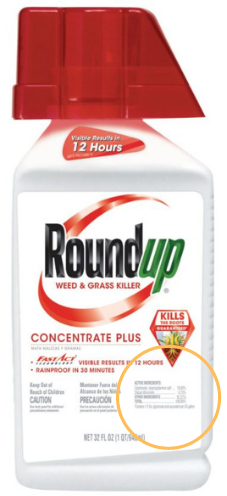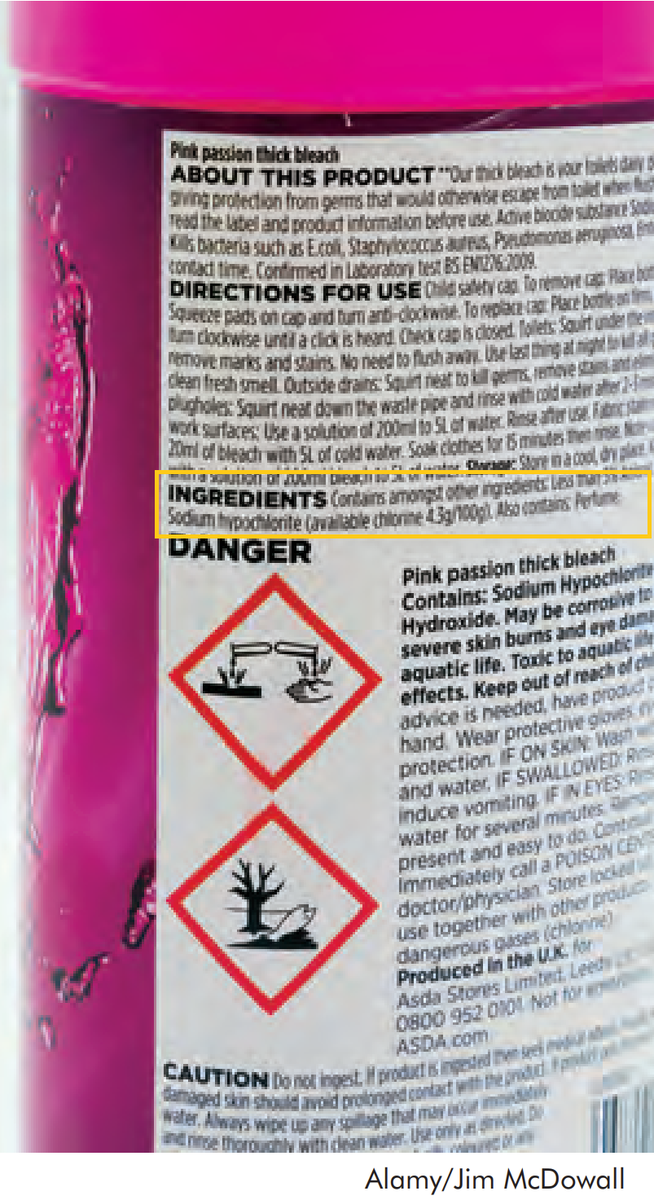Gateway on Pesticide Hazards and Safe Pest Management
How To Find Ingredients in Pesticide Products
Beyond Pesticides offers resources below to evaluate the health and ecological effects of specific chemical exposure from ACTIVE INGREDIENTS in pesticide products, as well as regulatory information and supporting scientific documents. Because various pesticide products can contain more than one active ingredient, it is important to READ the LABEL to determine chemical components.
With 192 different active ingredients and counting, it is essential to establish the connection between the use of these chemicals and their respective hazards.
View the step-by-step guide on how to search for the active ingredient(s) in pesticide products below:
- Go to U.S. EPA's Pesticide Product and Label System and enter the product name. The generic product name may vary.
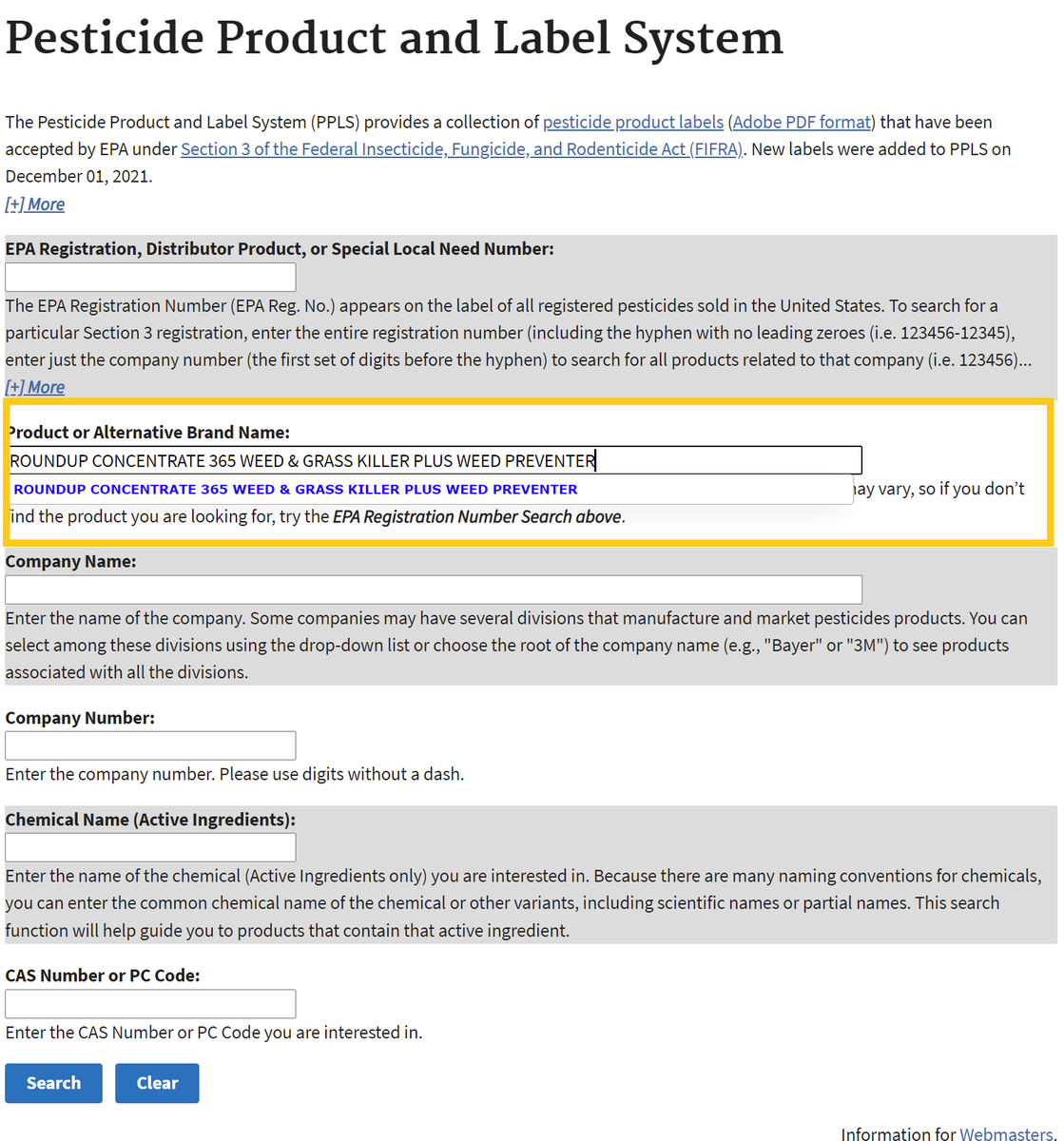
- After searching, click on the chemical ingredients tab or the link for the most recent label to find Active Ingredients.
Chemical List Label List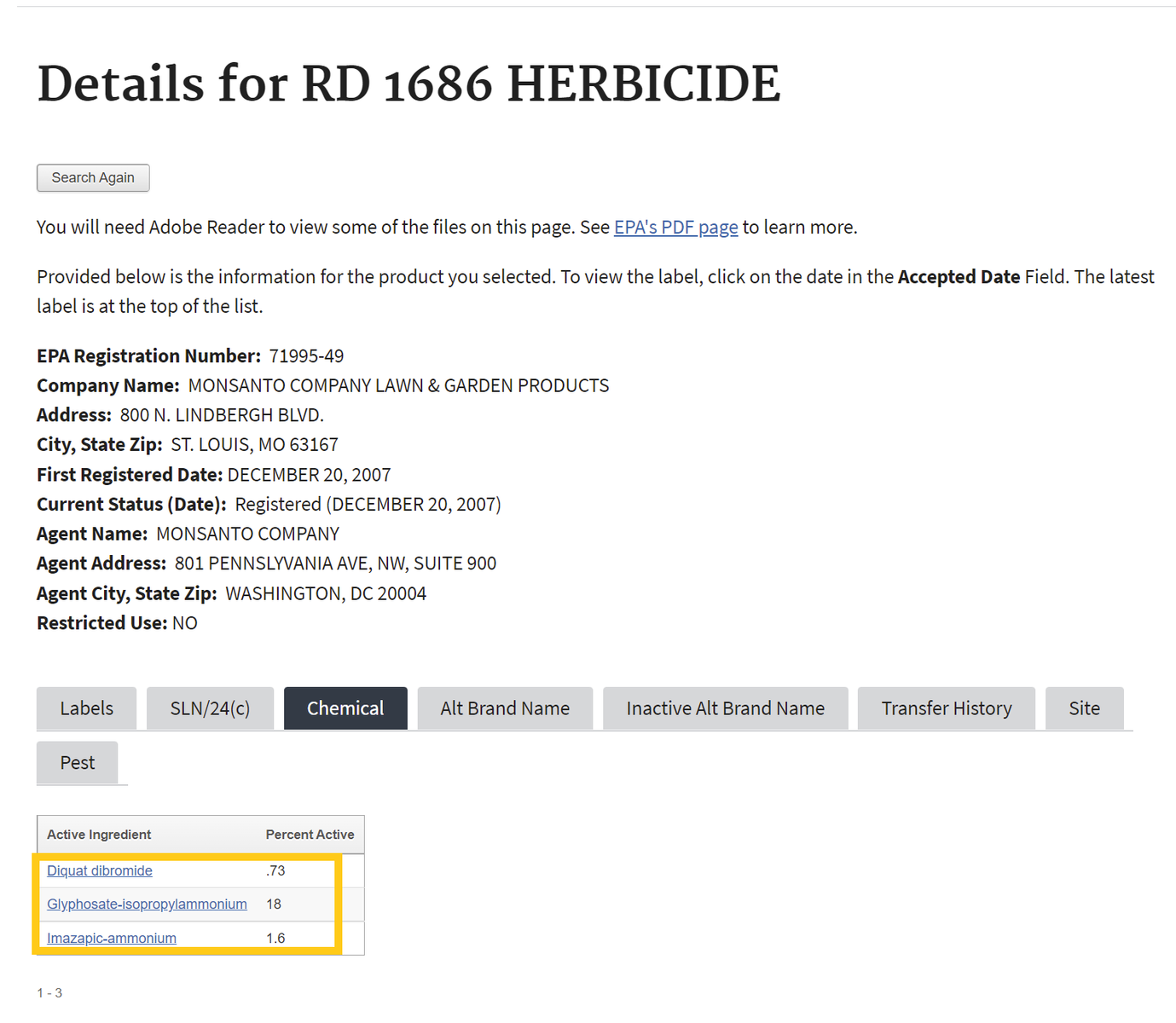
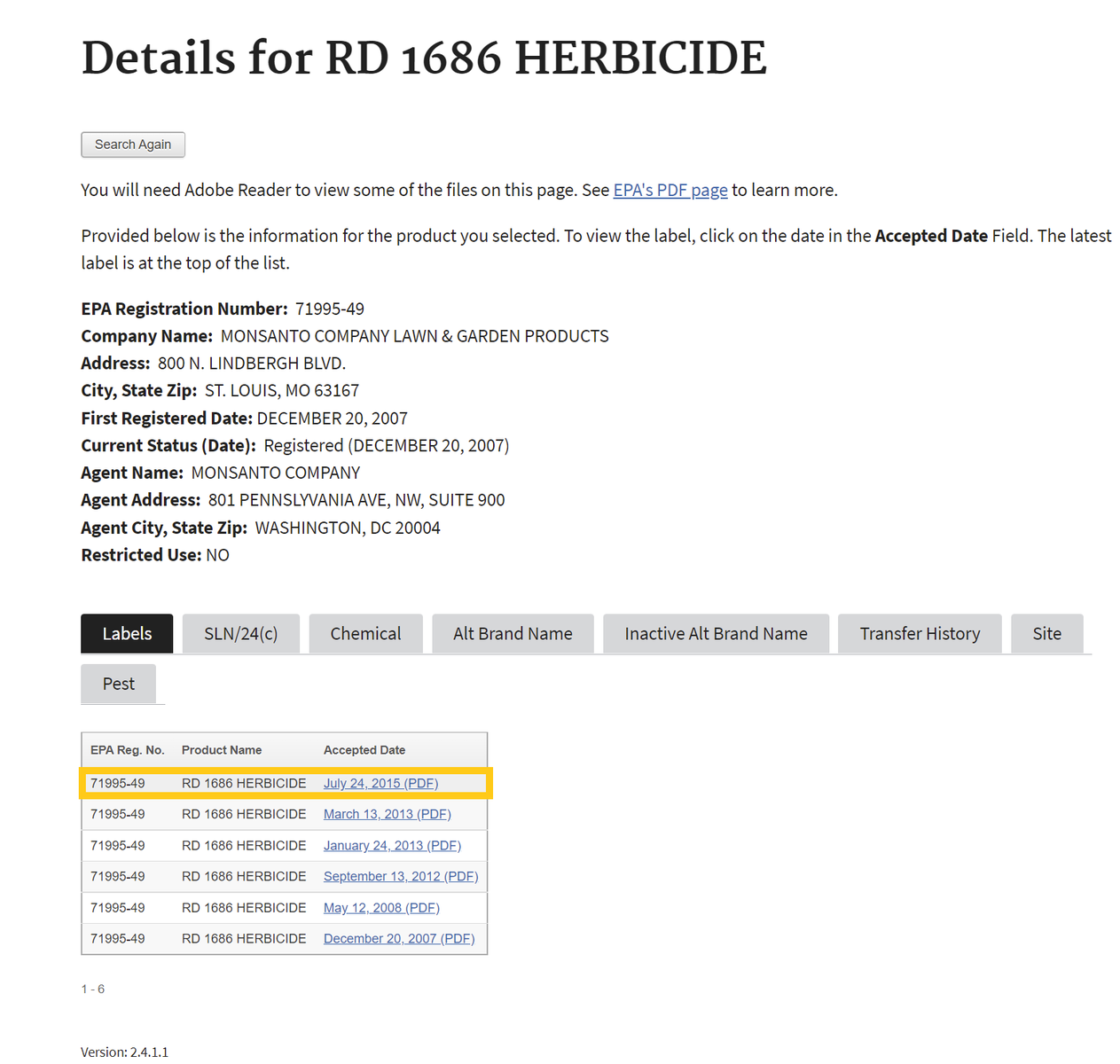
If one selects the chemical ingredients tab, skip to Step 4 . If not, proceed to step number 3 - To find the active ingredient(s) on the label, search for the page in the document containing the date of registration. Usually, the active ingredients section occurs within the first few pages of the label document.
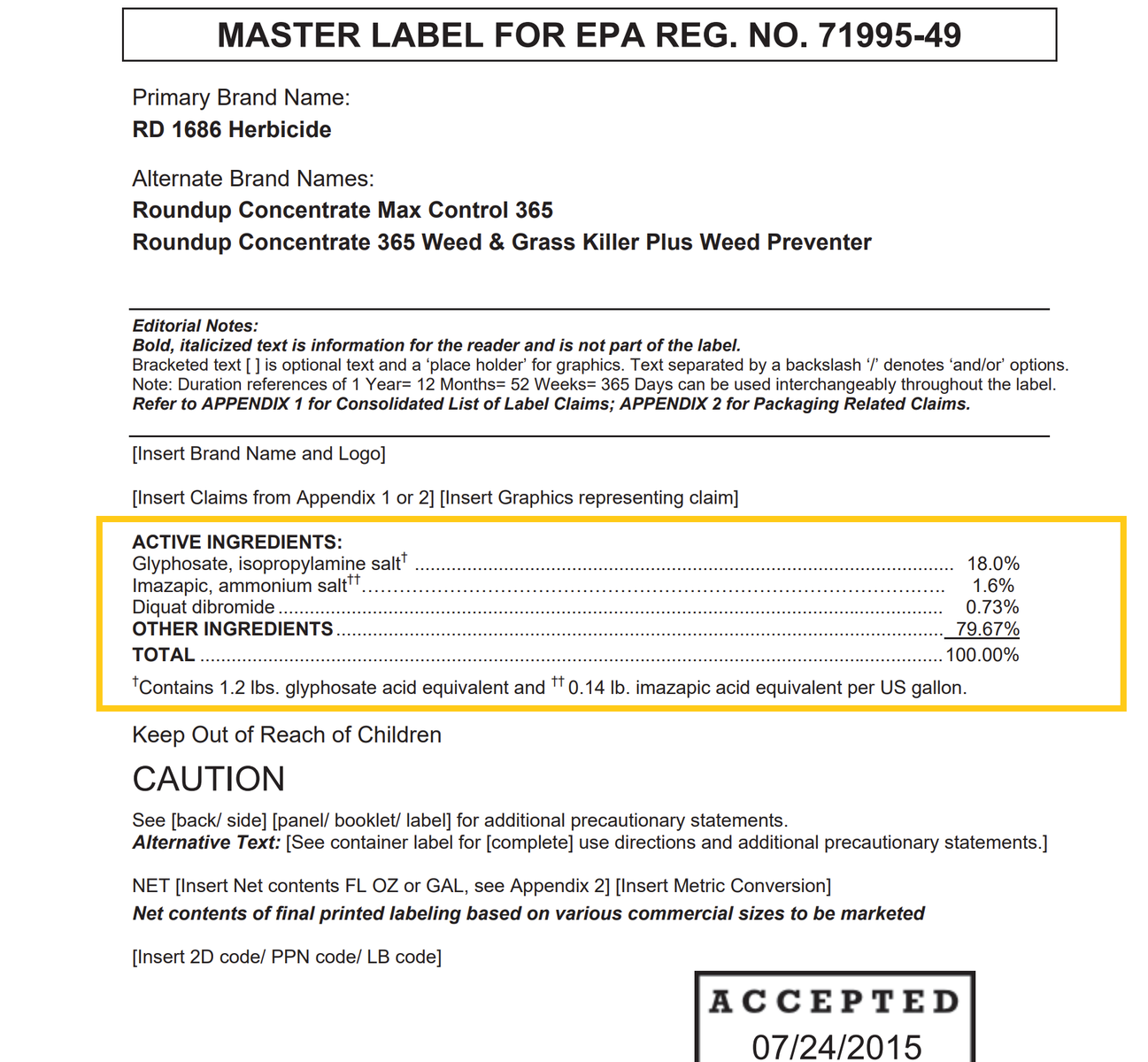
- Return to the Beyond Pesticides Gateway and search for the active ingredient name in the yellow box to the right or from the list below.
Azoxystrobin
General Information
- Product Names:
- Chemical Class: beta-methoxyacrylate fungicide/antimicrobial; systemic
- Uses: Various agriculture and non-agricultural uses: fruits, vegetables, nuts, feed crops, turf, ornamentals, residential sites; additive treatment for paint, plastic, rubber, paper (textiles and adhesives); commercial/industrial sites.
- Alternatives: Organic agriculture, Organic lawn care
- Beyond Pesticides rating: Toxic
Health and Environmental Effects
- Cancer: Not documented
- Endocrine Disruption: Not documented
- Reproductive Effects: Not documented
- Neurotoxicity: Not documented
- Kidney/Liver Damage: Not documented
- Sensitizer/ Irritant: Yes: eye (8)
- Birth/Developmental: Not documented
- Detected in Groundwater: Yes (39)
- Potential Leacher: Yes (8, 39)
- Toxic to Birds: Not documented
- Toxic to Fish/Aquatic Organisms: Yes (8, 39)
- Toxic to Bees: Not documented
Additional Information
- Regulatory Status:
- Supporting information:
- Extoxnet Pesticide Factsheet (Extension Toxicology Network)
- PAN Pesticides Database: (Pesticide Action Network)
- Studies:
- Occurrence of Azoxystrobin, Propiconazole, and Selected Other Fungicides in US Streams, 2005–2006. [Battaglin, W, Sandstrom, M et al. 2010. Water Air Soil Pollution. 218 (1-4):307-322 ]
- Occurrence, fate and effects of azoxystrobin in aquatic ecosystems: A review. [Rodrigues, ET, Lopes, I et al. 2013. Environment International 53:18–28]
- Direct pesticide exposure of insects in nature conservation areas in Germany. Brühl, C.A., Bakanov, N., Köthe, S., Eichler, L., Sorg, M., Hörren, T., Mühlethaler, R., Meinel, G. and Lehmann, G.U. Scientific reports, 11(1), pp.1-10.
- Bees under interactive stressors: the novel insecticides flupyradifurone and sulfoxaflor along with the fungicide azoxystrobin disrupt the gut microbiota of honey bees and increase opportunistic bacterial pathogens. Al Naggar, Y., Singavarapu, B., Paxton, R.J. and Wubet, T., 2022. Science of The Total Environment, 849, p.157941.
- Single and combined exposure to ‘bee safe’ pesticides alter behaviour and offspring production in a ground-nesting solitary bee (Xenoglossa pruinosa). Rondeau, S. and Raine, N. (2024) Single and combined exposure to ‘bee safe’ pesticides alter behaviour and offspring production in a ground-nesting solitary bee (Xenoglossa pruinosa), Proceedings of the Royal Society Biological Sciences. Available at: https://royalsocietypublishing.org/doi/10.1098/rspb.2023.2939.
- Exposure to pesticides, persistent and non − persistent pollutants in French 3.5-year-old children: Findings from comprehensive hair analysis in the ELFE national birth cohort. Macheka, L. et al. (2024) Exposure to pesticides, persistent and non − persistent pollutants in French 3.5-year-old children: Findings from comprehensive hair analysis in the ELFE national birth cohort, Environment International. Available at: https://www.sciencedirect.com/science/article/pii/S0160412024004677.
- Flooding as a Vector for the Transport of Pesticides from Streams to Riparian Plants. Fiolka, F. et al. (2024) Flooding as a Vector for the Transport of Pesticides from Streams to Riparian Plants, American Chemical Society ES&T Water. Available at: https://pubs.acs.org/doi/abs/10.1021/acsestwater.4c00571.
- Pesticides and prostate cancer incidence and mortality: An environment-wide association study. Soerensen, S. et al. (2024) Pesticides and prostate cancer incidence and mortality: An environment-wide association study, Cancer. Available at: https://acsjournals.onlinelibrary.wiley.com/doi/10.1002/cncr.35572.
- Immune response of Brazilian farmers exposed to multiple pesticides . Jacobsen-Pereira, C.H. et al. (2020) ‘Immune response of Brazilian farmers exposed to multiple pesticides’, Ecotoxicology and Environmental Safety, 202, p. 110912. doi:10.1016/j.ecoenv.2020.110912.
- A Th2-type immune response and low-grade systemic inflammatory reaction as potential immunotoxic effects in intensive agriculture farmers exposed to pesticides . Lozano-Paniagua, D. et al. (2024) ‘A th2-type immune response and low-grade systemic inflammatory reaction as potential immunotoxic effects in intensive agriculture farmers exposed to pesticides’, Science of The Total Environment, 938, p. 173545. doi:10.1016/j.scitotenv.2024.173545.
- Assessing the Presence of Current-Use Pesticides in Mid-Elevation Sierra Nevada Streams Using Passive Samplers, California, 2018–19. De Parsia, M.D., Orlando, J.L., and Hladik, M.L., 2023, Assessing the presence of current-use pesticides in mid-elevation Sierra Nevada streams using passive samplers, California, 2018–19: U.S. Geological Survey Scientific Investigations Report 2022–5129, 31 p., https://doi.org/10.3133/sir20225129.
- Effects of Microplastics on the Adsorption and Bioavailability of Three Strobilurin Fungicides. Hai, N., Liu, X., Li, Y., Kong, F., Zhang, Y., & Fang, S. (2020). Effects of Microplastics on the Adsorption and Bioavailability of Three Strobilurin Fungicides. ACS omega, 5(47), 30679–30686. https://doi.org/10.1021/acsomega.0c04787
- Different effects of polyethylene microplastics on bioaccumulation of three fungicides in maize (Zea mays L.). Qiu, S., Shen, H., Song, J. et al. Different effects of polyethylene microplastics on bioaccumulation of three fungicides in maize (Zea mays L.). Crop Health 2, 7 (2024). https://doi.org/10.1007/s44297-024-00028-x
- The influence of polyethylene microplastics on pesticide residue and degradation in the aquatic environment. Wang, F., Gao, J., Zhai, W., Liu, D., Zhou, Z., & Wang, P. (2020). The influence of polyethylene microplastics on pesticide residue and degradation in the aquatic environment. Journal of hazardous materials, 394, 122517. https://doi.org/10.1016/j.jhazmat.2020.122517
- Intensive vegetable production under plastic mulch: A field study on soil plastic and pesticide residues and their effects on the soil microbiome. Beriot, N., Zornoza, R., Lwanga, E. H., Zomer, P., van Schothorst, B., Ozbolat, O., Lloret, E., Ortega, R., Miralles, I., Harkes, P., van Steenbrugge, J., & Geissen, V. (2023). Intensive vegetable production under plastic mulch: A field study on soil plastic and pesticide residues and their effects on the soil microbiome. The Science of the total environment, 900, 165179. https://doi.org/10.1016/j.scitotenv.2023.165179
- Pesticide effects on nitrogen cycle related microbial functions and community composition. Sim, J. X. F., Doolette, C. L., Vasileiadis, S., Drigo, B., Wyrsch, E. R., Djordjevic, S. P., Donner, E., Karpouzas, D. G., & Lombi, E. (2022). Pesticide effects on nitrogen cycle related microbial functions and community composition. The Science of the total environment, 807(Pt 1), 150734. https://doi.org/10.1016/j.scitotenv.2021.150734
- Fate of pesticide residues in beer and its by-products. Hakme, E., Kallehauge Nielsen, I., Fermina Madsen, J., Storkehave, L. M., Skjold Elmelund Pedersen, M., Schulz, B. L., … Duedahl-Olesen, L. (2023). Fate of pesticide residues in beer and its by-products. Food Additives & Contaminants: Part A, 41(1), 45–59. https://doi.org/10.1080/19440049.2023.2282557
- Combined Cytotoxic Effects of the Fungicide Azoxystrobin and Common Food-Contaminating Mycotoxins. Fuentes, C. et al. (2025) Combined Cytotoxic Effects of the Fungicide Azoxystrobin and Common Food-Contaminating Mycotoxins, Foods. Available at: https://www.mdpi.com/2304-8158/14/7/1226.
- Azoxystrobin Induces Apoptosis of Human Esophageal Squamous Cell Carcinoma KYSE-150 Cells through Triggering of the Mitochondrial Pathway. Shi, X. K., Bian, X. B., Huang, T., Wen, B., Zhao, L., Mu, H. X., Fatima, S., Fan, B. M., Bian, Z. X., Huang, L. F., & Lin, C. Y. (2017). Azoxystrobin Induces Apoptosis of Human Esophageal Squamous Cell Carcinoma KYSE-150 Cells through Triggering of the Mitochondrial Pathway. Frontiers in pharmacology, 8, 277. https://doi.org/10.3389/fphar.2017.00277
- Fungicide and insecticide exposure adversely impacts bumblebees and pollination services under semi-field conditions. Tamburini, G., Pereira-Peixoto, M. H., Borth, J., Lotz, S., Wintermantel, D., Allan, M. J., Dean, R., Schwarz, J. M., Knauer, A., Albrecht, M., & Klein, A. M. (2021). Fungicide and insecticide exposure adversely impacts bumblebees and pollination services under semi-field conditions. Environment international, 157, 106813. https://doi.org/10.1016/j.envint.2021.106813
- Pesticide residues in fresh fruits imported into the United Arab Emirates. Osaili, Tareq & Sallagi, Maryam & Kumar, Dinesh & Odeh, Wael & Ali, Hajer & Ali, Ahmed & Cheikh Ismail, Leila & Mehri, Khadija & Pisharath, Vijayan & Holley, Richard & Shaker Obaid, Reyad. (2022). Pesticide residues in fresh fruits imported into the United Arab Emirates. Heliyon. 8. e11946. 10.1016/j.heliyon.2022.e11946.
- Monitoring of Non-Maximum-Residue-Level Pesticides in Animal Feed: A Study from 2019 to 2023. Giugliano, R., Armenio, V., Savio, V., Vaccaro, E., Ciccotelli, V., & Vivaldi, B. (2024). Monitoring of Non-Maximum-Residue-Level Pesticides in Animal Feed: A Study from 2019 to 2023. Toxics, 12(9), 680. https://doi.org/10.3390/toxics12090680
- Occurrence of Current-Use Pesticides in Paired Indoor Dust, Drinking Water, and Urine Samples from the United States: Risk Prioritization and Health Implications. Xie, Y., Li, J., Salamova, A., & Zheng, G. (2025). Occurrence of Current-Use Pesticides in Paired Indoor Dust, Drinking Water, and Urine Samples from the United States: Risk Prioritization and Health Implications. Environmental science & technology, 59(25), 12507–12519. https://doi.org/10.1021/acs.est.5c00961
- Pesticides in surface water of the Ondas river watershed, western Bahia, Brazil: Spatial-seasonal distribution and risk assessment. do Rego EL, de Souza JR, Nakamura TC, Portela JF, Diniz PHGD, da Silva JDS. Pesticides in surface water of the Ondas river watershed, western Bahia, Brazil: Spatial-seasonal distribution and risk assessment. Chemosphere. 2024 Apr;354:141659. doi: 10.1016/j.chemosphere.2024.141659. Epub 2024 Mar 13. PMID: 38490616.
- Synergistic Pesticide Effects on Complex Arthropod Trophic Interactions in Arable Systems. Woodcock, B. et al. (2025) Synergistic Pesticide Effects on Complex Arthropod Trophic Interactions in Arable Systems, Environmental Science & Technology. Available at: https://pubs.acs.org/doi/abs/10.1021/acs.est.5c04611.
- Characterization of aggregated exposure to multiple pesticides near agricultural fields: an application of silicone wristbands. Ottenbros, Ilse & Vermeulen, R & Krop, E & Beeltje, Henry & Fuhrimann, Samuel & Figueiredo, Daniel. (2025). Characterization of aggregated exposure to multiple pesticides near agricultural fields: an application of silicone wristbands. Environmental Research Communications. 7. 10.1088/2515-7620/adc547.
- Pesticides detected in two urban areas have implications for local butterfly conservation. Dittemore, C. et al. (2025) Pesticides detected in two urban areas have implications for local butterfly conservation, Environmental Toxicology and Chemistry. Available at: https://academic.oup.com/etc/advance-article-abstract/doi/10.1093/etojnl/vgaf218/8245823.
- Combined pesticide pollution enhances the dissemination of the phage-encoded antibiotic resistome in the soil under nitrogen deposition. Shen, Luo-Qin et al. “Combined pesticide pollution enhances the dissemination of the phage-encoded antibiotic resistome in the soil under nitrogen deposition.” Proceedings of the National Academy of Sciences of the United States of America vol. 122,40 (2025): e2516722122. doi:10.1073/pnas.2516722122
- A cumulative dietary pesticide exposure score based on produce consumption is associated with urinary pesticide biomarkers in a U.S. biomonitoring cohort. Temkin, A. et al. (2025) A cumulative dietary pesticide exposure score based on produce consumption is associated with urinary pesticide biomarkers in a U.S. biomonitoring cohort, International Journal of Hygiene and Environmental Health. Available at: https://www.sciencedirect.com/science/article/pii/S1438463925001361.








.png)
